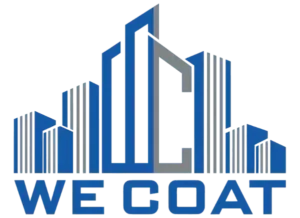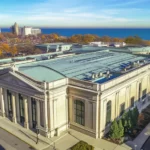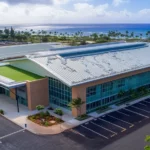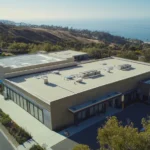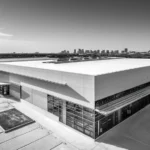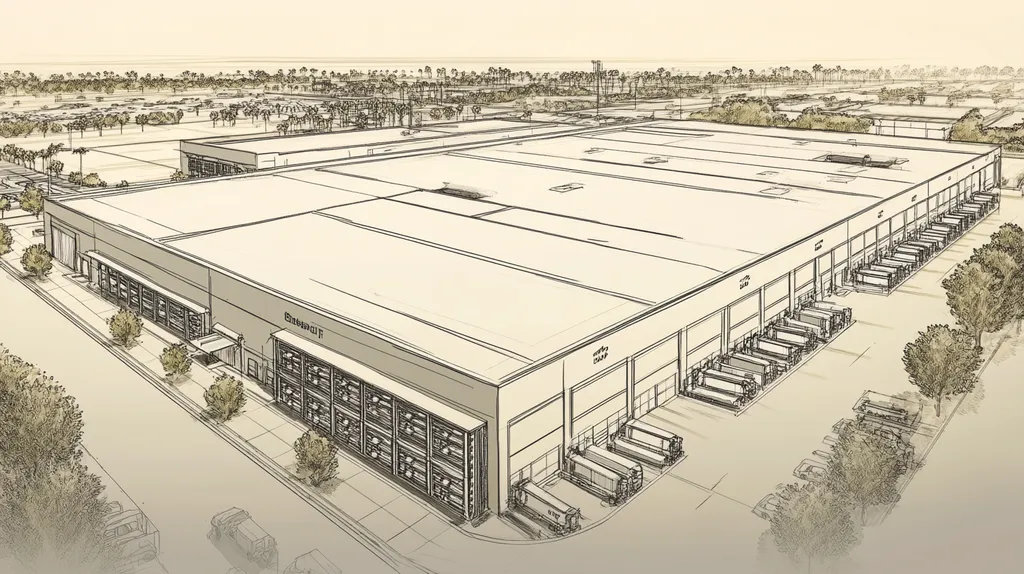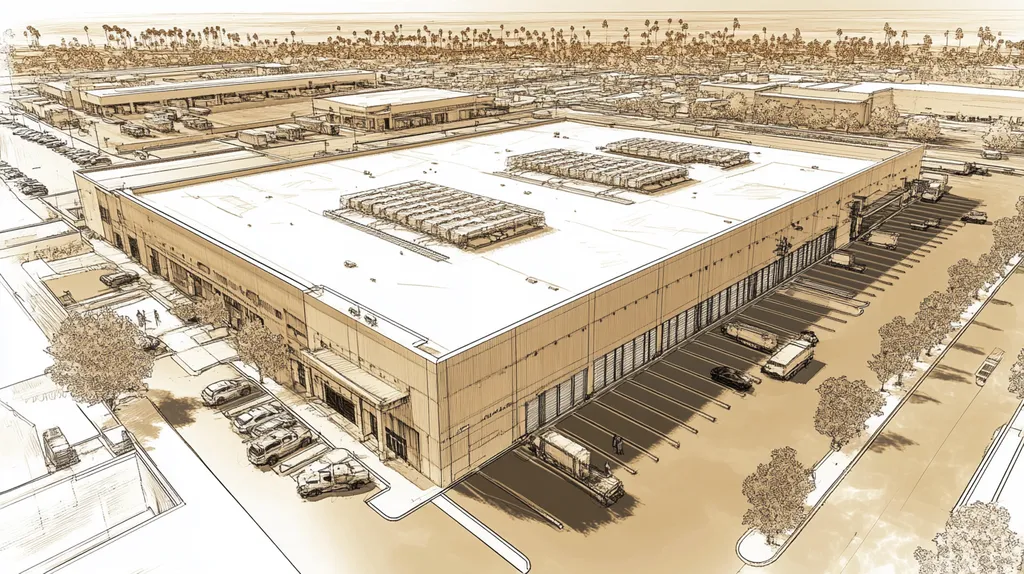Welcome to today’s Battle Royale featuring two roofing heavyweights: “Inverted Roof Systems” in the east corner versus “Standard Roof Systems” in the west!
Tonight’s showdown pits these contenders against each other across six punishing rounds designed to test every aspect of their performance for minimizing disruptions during commercial roof repair work.
At stake? Millions in potential costs, decades of building protection, and the critical performance demands of modern commercial and industrial facilities.
Our professional judging panel will evaluate each round on technical merit, real-world performance, and value delivery. After all six rounds, we’ll declare our ultimate champion.
Ladies and gentlemen, facility managers and building owners… it’s time to rumble!
ROUND 1: INITIAL COSTS & INSTALLATION
When commercial roofing projects disrupt business operations, every hour of downtime translates to lost revenue and productivity. Property owners and facility managers must carefully weigh the initial investment against potential disruptions during installation and future repairs. The choice between Inverted and Standard Roof Systems has far-reaching implications for both immediate costs and long-term operational continuity.
Material Expenses
The best way to minimize disruption in commercial roofing is to select durable, long-lasting materials that reduce the frequency of repair work. While Inverted Roof Systems require premium materials like specialized insulation and ballast layers, their durability can significantly decrease the need for future repairs. (source: GAF)
Standard Roof Systems utilize conventional materials that cost less initially but may require more frequent replacement. These materials are widely available and typically cost 30-40% less than specialized inverted roof components.
For immediate budget considerations, Standard Roof Systems earn the “ADVANTAGE” in material expenses, though this benefit may diminish over time.
Installation Complexity
Inverted Roof Systems demand precise installation techniques and specialized expertise. The multiple layers must be installed in a specific sequence, with particular attention to moisture barriers and drainage systems.
Standard Roof Systems follow conventional installation methods that most commercial roofing crews can execute efficiently. This familiarity typically results in fewer installation complications and reduced likelihood of errors.
With simpler installation requirements and wider contractor availability, Standard Roof Systems claim the clear “ADVANTAGE” in this category.
Project Timeline
Installation time directly impacts business operations and revenue. Inverted Roof Systems require careful coordination of multiple specialized components and often demand extended curing periods between layers.
Standard Roof Systems generally complete in 25-40% less time due to straightforward installation processes and fewer specialized components. This efficiency minimizes the duration of business disruptions.
Given the significant difference in completion times, Standard Roof Systems earn another clear “ADVANTAGE” in project timeline considerations.
ROUND 1 WINNER: STANDARD ROOF SYSTEMS
ROUND 2: DURABILITY & LIFESPAN
When selecting a commercial roofing system, durability directly impacts operational continuity and long-term costs. Every repair requirement creates potential business disruptions, making the lifespan of roofing materials a critical factor in minimizing future interruptions. Property managers must evaluate how different roofing systems withstand environmental stressors and maintain their protective capabilities over time.
Weather Resistance
Inverted Roof Systems excel in weather resistance due to their unique layered construction. The insulation and ballast layers shield the waterproof membrane from UV exposure, temperature fluctuations, and physical impacts from hail or debris.
These systems demonstrate superior performance during extreme weather events, with the weight of the ballast providing excellent wind uplift resistance. The protected membrane experiences minimal thermal shock, reducing the likelihood of cracks or separations.
Standard Roof Systems expose their waterproof membrane directly to environmental elements. This exposure accelerates material degradation and increases vulnerability to storm damage.
With significantly better protection against environmental factors, Inverted Roof Systems earn the “ADVANTAGE” in weather resistance.
Physical Durability
The layered construction of Inverted Roof Systems creates multiple barriers against physical damage. Service technicians can access HVAC equipment without directly contacting the waterproof membrane, reducing the risk of punctures or tears.
The ballast layer disperses point loads across a wider area, protecting underlying components from damage. This distribution effect is particularly valuable in areas with frequent maintenance traffic.
Standard Roof Systems offer less protection against physical impacts. Their exposed membranes are more susceptible to damage from foot traffic, dropped tools, and routine maintenance activities.
Given their superior resistance to physical damage, Inverted Roof Systems claim another clear “ADVANTAGE” in this category.
Lifespan Assessment
Inverted Roof Systems typically maintain their performance characteristics for 30-40 years when properly maintained. Their protected membranes experience slower degradation, resulting in fewer repair cycles throughout the roof’s lifetime.
The durability of these systems translates directly to reduced business disruptions. The best way to minimize disruption is to use durable, long-lasting materials that reduce the frequency of repair work. (source: GAF)
Standard Roof Systems generally require replacement or major repairs within 15-25 years. Their exposed components deteriorate more quickly, necessitating more frequent maintenance interventions that disrupt business operations.
With a significantly longer service life and reduced repair requirements, Inverted Roof Systems secure the “ADVANTAGE” in lifespan assessment.
ROUND 2 WINNER: Inverted Roof Systems
ROUND 3: PERFORMANCE FACTORS
Commercial roofing performance directly impacts business continuity and operational costs. Recent industry data shows that performance-related roofing issues account for 40% of unplanned business disruptions in commercial facilities. When roof systems fail to perform as expected, the resulting repairs can lead to extensive downtime and lost revenue.
Durability Under Stress
A roof system’s ability to withstand daily stress determines how frequently repairs will disrupt operations. Inverted roof systems excel here, with their protected membrane design significantly reducing exposure to UV radiation, thermal cycling, and physical damage.
Standard roof systems leave their waterproofing membrane exposed to environmental stresses. This exposure accelerates wear and increases the likelihood of damage requiring immediate repairs during business hours.
Business interruption insurance may cover income losses during disaster-related repairs, but prevention through durable systems offers better protection against operational disruptions. (source: Insurance Information Institute)
Given their superior protection against daily stressors, Inverted Roof Systems earn the “ADVANTAGE” in durability.
Thermal Performance
Effective thermal management reduces strain on building systems and extends roof longevity. Inverted roof systems provide exceptional thermal stability by placing insulation above the waterproof membrane, protecting it from temperature fluctuations.
The consistent temperature maintained by inverted systems helps prevent thermal shock and membrane fatigue. This stability translates to fewer emergency repairs and planned maintenance disruptions.
Standard roof systems typically experience greater thermal cycling, which can accelerate membrane degradation. Their conventional design allows more heat transfer, potentially leading to condensation issues requiring remediation.
With superior thermal protection and stability, Inverted Roof Systems claim the “ADVANTAGE” in this category.
Maintenance Accessibility
Easy access for inspections and repairs helps minimize the duration of maintenance disruptions. Standard roof systems offer direct access to the waterproofing membrane, allowing quick identification and repair of issues.
This accessibility advantage helps maintenance teams complete repairs efficiently, reducing downtime impact on building occupants. However, the frequency of required repairs may offset this benefit.
Inverted roof systems require removal of ballast and insulation layers to access the membrane. While this extends repair times, the superior durability means fewer repairs are needed overall.
For maintenance accessibility, Standard Roof Systems earn the “ADVANTAGE” in this category.
ROUND 3 WINNER: INVERTED ROOF SYSTEMS
ROUND 4: MAINTENANCE REQUIREMENTS
Maintenance requirements can make or break a commercial property’s operational efficiency. Industry data reveals that unplanned roofing maintenance causes an average of 47 hours of business disruption annually, costing facilities thousands in lost productivity. For property managers, selecting a roofing system that minimizes these interruptions while maintaining protective integrity has become increasingly critical.
Maintenance Frequency and Ease
Standard roof systems typically require quarterly inspections and frequent preventive maintenance due to direct exposure to environmental elements. Their accessible design makes inspections straightforward but necessitates more frequent intervention to prevent degradation.
These systems often need attention after severe weather events, requiring prompt response to prevent water infiltration. The exposed membrane’s vulnerability means maintenance crews must be deployed more often, creating recurring business disruptions.
Inverted roof systems benefit from protected membranes that reduce inspection requirements to bi-annual visits. Their robust design shields critical components from environmental damage, significantly reducing the frequency of maintenance interventions.
With substantially lower maintenance frequency requirements, Inverted Roof Systems earn the “ADVANTAGE” in this category.
Cost of Maintenance
Business Interruption Insurance can help offset income losses during major repairs, but prevention through strategic maintenance remains more cost-effective. The Insurance Information Institute emphasizes that while insurance covers disruptions, minimizing maintenance events better protects operational continuity. (source: Insurance Information Institute)
Standard roof systems typically incur higher maintenance costs due to more frequent repairs and replacement of weathered materials. Their exposed components often require specialized coatings and treatments to maintain performance.
Inverted roof systems demonstrate lower long-term maintenance costs due to their protected components and reduced repair frequency. Their durable design minimizes the need for extensive maintenance interventions.
Given their superior cost efficiency over time, Inverted Roof Systems claim the “ADVANTAGE” in maintenance costs.
Impact on Business Operations
Standard roof systems often require maintenance during business hours due to safety requirements and visibility needs. These interventions can disrupt normal operations through noise, odors, and restricted access to facility areas.
Multiple maintenance visits throughout the year create cumulative disruptions that impact productivity and customer experience. The frequent presence of maintenance crews can interfere with parking, deliveries, and normal business activities.
Inverted roof systems minimize operational impacts through reduced maintenance frequency and better protection of critical components. Their design allows most maintenance to be scheduled during off-peak hours, limiting interference with daily operations.
For their minimal impact on business continuity, Inverted Roof Systems secure the “ADVANTAGE” in operational disruption.
ROUND 4 WINNER: Inverted Roof Systems
ROUND 5: SUSTAINABILITY CREDENTIALS
Sustainable roofing choices directly impact both environmental footprint and operational costs. Recent industry data shows that commercial buildings account for 38% of total energy consumption, with roofing systems playing a crucial role in energy efficiency. As regulations tighten and utility costs rise, the sustainability credentials of roofing systems have become a major factor in minimizing both environmental impact and operational disruptions.
Material Sustainability
Inverted roof systems utilize highly recyclable materials and often incorporate post-consumer content in their insulation and membrane components. Their extended lifespan means fewer materials end up in landfills over time.
The durable construction of inverted systems reduces material waste during both installation and maintenance. The best way to minimize environmental impact is to use long-lasting materials that reduce the frequency of replacement and repairs. (source: GAF)
Standard roof systems typically rely on conventional materials with shorter lifecycles and lower recycled content. Their more frequent replacement schedule contributes significantly to construction waste.
Given their superior material sustainability and reduced waste, Inverted Roof Systems earn the “ADVANTAGE” in this category.
Energy Performance
The layered design of inverted roof systems provides exceptional thermal performance. Their above-membrane insulation creates a more stable thermal environment, reducing heating and cooling demands throughout the year.
This enhanced efficiency translates to lower utility costs and reduced strain on HVAC systems. The constant temperature maintained by inverted systems helps prevent thermal-related wear on roofing components.
Standard roof systems offer less consistent thermal protection, with temperature fluctuations affecting both energy efficiency and material longevity. Their conventional insulation placement makes them more susceptible to thermal bridging and heat loss.
With significantly better energy performance, Inverted Roof Systems claim the “ADVANTAGE” in this category.
Environmental Impact
Inverted roof systems contribute to reduced carbon emissions through their superior insulation and durability. Their design supports green roof installations and solar panel integration without compromising the waterproof membrane.
The extended lifespan of these systems means fewer replacement cycles and reduced manufacturing impacts over time. Their resistance to weather damage also decreases the need for repair-related transportation and material production.
Standard roof systems generally have a larger environmental footprint due to more frequent replacement needs and lower energy efficiency. Their shorter lifecycle increases both material consumption and disposal impacts.
For their reduced environmental impact, Inverted Roof Systems secure the “ADVANTAGE” in this category.
ROUND 5 WINNER: INVERTED ROOF SYSTEMS
ROUND 6: SPECIALIZED APPLICATIONS
Commercial roofing decisions carry significant operational consequences, particularly in facilities requiring specialized applications. Recent data shows that improper roofing system selection can increase repair-related downtime by up to 300% in sensitive environments like data centers, healthcare facilities, and manufacturing plants. For facility managers overseeing these critical operations, choosing between inverted and standard roof systems becomes a high-stakes decision that directly impacts business continuity.
Critical Environment Protection
In sensitive facilities like hospitals and data centers, even minor roof leaks can compromise critical operations and equipment. Inverted roof systems provide superior protection through their multi-layer design, which prevents water infiltration from reaching sensitive areas during repair work.
The protected membrane design allows repair crews to work on sections of the roof while maintaining watertight integrity elsewhere. This compartmentalization significantly reduces the risk of operational disruptions during maintenance.
Standard roof systems offer less protection during repairs, as their single-layer membrane design leaves facilities more vulnerable to water infiltration. When repairs are needed, the risk of disruption to sensitive operations increases substantially.
For critical environment protection, Inverted Roof Systems earn the clear “ADVANTAGE” in this category.
Equipment Integration
Modern commercial facilities often require extensive rooftop equipment integration. Inverted roof systems excel in this application, as their ballasted design creates stable platforms for HVAC units, satellite equipment, and solar installations.
The protected membrane layer remains intact even when equipment requires maintenance or replacement. This design allows facility managers to modify or upgrade rooftop equipment without compromising the roof’s integrity.
Standard roof systems typically require additional reinforcement and penetration points for equipment mounting. These modifications increase the potential for leaks and complicate future repairs, leading to longer maintenance downtimes.
Given their superior equipment integration capabilities, Inverted Roof Systems claim the “ADVANTAGE” in this category.
High-Traffic Areas
Many commercial facilities require regular rooftop access for equipment maintenance and facility operations. Inverted roof systems provide built-in traffic protection through their ballast layer, which distributes weight and prevents direct contact with the waterproof membrane.
This design allows maintenance crews to access equipment without special protection measures. The durable surface reduces the risk of accidental damage during routine maintenance activities.
Standard roof systems often require temporary protection measures during maintenance access. These additional steps increase repair time and costs while still risking membrane damage from foot traffic.
For their superior handling of high-traffic areas, Inverted Roof Systems secure the “ADVANTAGE” in this category.
ROUND 6 WINNER: Inverted Roof Systems
AND THE WINNER IS…
After six grueling rounds of technical analysis, with millions in potential costs and decades of building protection on the line, we have our undisputed champion!
With a commanding 5-1 victory, INVERTED ROOF SYSTEMS claims the title of ultimate disruption minimizer! This powerhouse dominated the competition with knockout performances in durability, performance, maintenance, sustainability, and specialized applications.
The champion’s protected membrane design and superior longevity delivered a technical knockout, proving that sometimes paying more upfront means fewer disruptions down the road.
But don’t count Standard Roof Systems out completely! This veteran contender still packs a punch in Round 1, offering lower initial costs and faster installation times. For properties with tight budgets or short-term operational horizons, it remains a viable contender.
*Official Disclaimer*
Every building represents its own unique match-up. Local climate conditions, structural requirements, and operational demands can significantly impact system performance. This analysis provides general guidance but cannot account for all variables. Property owners should always consult qualified roofing professionals who can evaluate their specific situation before making final decisions.
Ladies and gentlemen, remember: in the high-stakes world of commercial roofing, the true champion is the system that best protects your specific facility’s operational continuity. Choose your fighter wisely!
FREQUENTLY ASKED QUESTIONS
Q. How do initial costs compare for commercial roof systems?
A. Initial costs for commercial roof systems vary significantly. Standard Roof Systems are cheaper upfront, while Inverted Roof Systems, though pricier, often lead to fewer disruptions and repairs over time. Assessing long-term costs can provide a clearer financial picture.
Q. Which roof system is more durable for industrial roofs?
A. Inverted Roof Systems are more durable, offering superior protection against environmental stressors. They generally have a longer lifespan, requiring fewer repairs and reducing potential disruptions in operations compared to Standard Roof Systems.
Q. How does roof performance affect business operations?
A. Roof performance is crucial as poor functionality can lead to unplanned repairs, causing significant business interruptions. Inverted Roof Systems tend to offer better performance, reducing the occurrence of issues that lead to downtime in commercial facilities.
Q. What are the maintenance requirements for commercial roofs?
A. Standard Roof Systems require more frequent inspections and maintenance due to their exposure to elements. In contrast, Inverted Roof Systems have less demanding maintenance needs, necessitating less frequent intervention and thus minimizing disruption to daily operations.
Q. How do sustainability credentials vary across roof systems?
A. Inverted Roof Systems are designed using more sustainable materials and offer better energy efficiency. This leads to reduced environmental impact over time, while Standard Roof Systems contribute to more waste due to their shorter lifespans and frequent replacements.
Q. What roof system works best for specialized applications?
A. Inverted Roof Systems are preferable for specialized applications as they provide better protection for sensitive areas. Their multi-layer design minimizes risks during maintenance, ensuring operational continuity for critical environments like data centers and healthcare facilities.
Q. Can commercial roof materials impact energy efficiency?
A. Yes, roof materials significantly affect energy efficiency. Inverted Roof Systems typically provide better insulation, reducing heating and cooling demands. This leads to lower energy costs and improved performance, particularly in commercial buildings where energy consumption is high.
